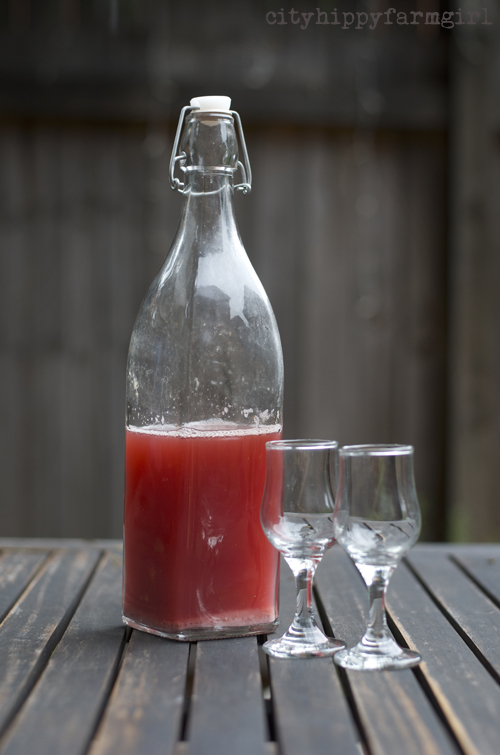I’d never really paid much attention to mead. I had heard of it certainly, but had never tried it. Not because I didn’t want to, I just well…didn’t pay it much attention.
But then fermentation stepped into my life. Sourdough certainly. Sauerkraut became a staple. Pickles started appearing and then I got a box of plums.
See it was the box of plums that pushed me to the mead. I needed to process the whole box, but space (as always) was an issue. I couldn’t store that amount of jars of jam or chilli sauce, nor could I freeze a huge amount either. I went looking, flicked through the trusty bible, figuring there must be some other way of fermenting with plums I hadn’t thought of.
So that’s how mead stepped in.
I read, planned and hesitantly started. Within 24 hours there was fermentation action happening and that was just a little bit exciting. There are just three ingredients in there- honey, water and plums. That’s it, and then the bottle started bubbling like an excitable volcano. The excitement was contagious. I continually checked and stirred it. I thought it would take about a week for bubbles to ease off but it only took 5 days (Sydney, Australia summer time). Strained and bottled, the taste test.
It was good. I thought.
I say I thought, because at this stage, I still had no idea what mead tasted like, so had nothing to gauge it by. It’s hard to tell whether there is much alcohol content. The test would be to down the bottle on an empty stomach and see what happens, but that didn’t seem likely to happen.
Ten days into the fermentation, (second fermentation period) the mead developed a thin mould layer. It had a closed lid, so I wasn’t quite sure what to do. I did what any hack city hippy would do, and shook it in, ignored it and popped it in the fridge.
But not before I had a good smell of it. I have finally gotten to trust my nose. With all my fermenting experiments I always smell them along the way. Observing differences, subtle changes and really trying to identify when and where things start to change. I trust my nose and if I’m not sure, well I don’t use it- The Plum Mead smelt fine, and while several weeks later into the fermentation process the taste was fairly underwhelming, I am keen to try it again.
Next, I started on a Honey Mead, (or honey wine). Raw honey and unchlorinated water, that’s it.
Now according to Sandor Katz, (who I was lucky enough to hear speak recently) raw honey already contains abundant yeasts- with pasteurisation or cooking killing them off.
“The yeasts are inactive so long as the honey’s water content remains at or below 17 percent (as it is in fully mature honey). But increase the water content just a little bit beyond that and the yeasts wake right up.”
And so I did. I woke those little things up with a ratio of 1:4, following the instructions, and intermittently smelling it. At the end of three weeks I have a lovely light (green) sweet tasting mead. I can’t liken it to anything else I’ve ever had, but it’s good and I think this could be the beginning of many more meads to come.
So what do my two experiments with mead making have to do with Vikings?
Well according to Norse mythology, mead seems to be heavily linked with the Norse god Odin and along with it, anyone that drinks mead may become a poet or scholar. I’m still waiting for poetic inspiration, but perhaps I simply haven’t made or drunk enough of the honey gold beverage?
************
All of my mead making inspired by
The Art of Fermentation- Sandor Katz


